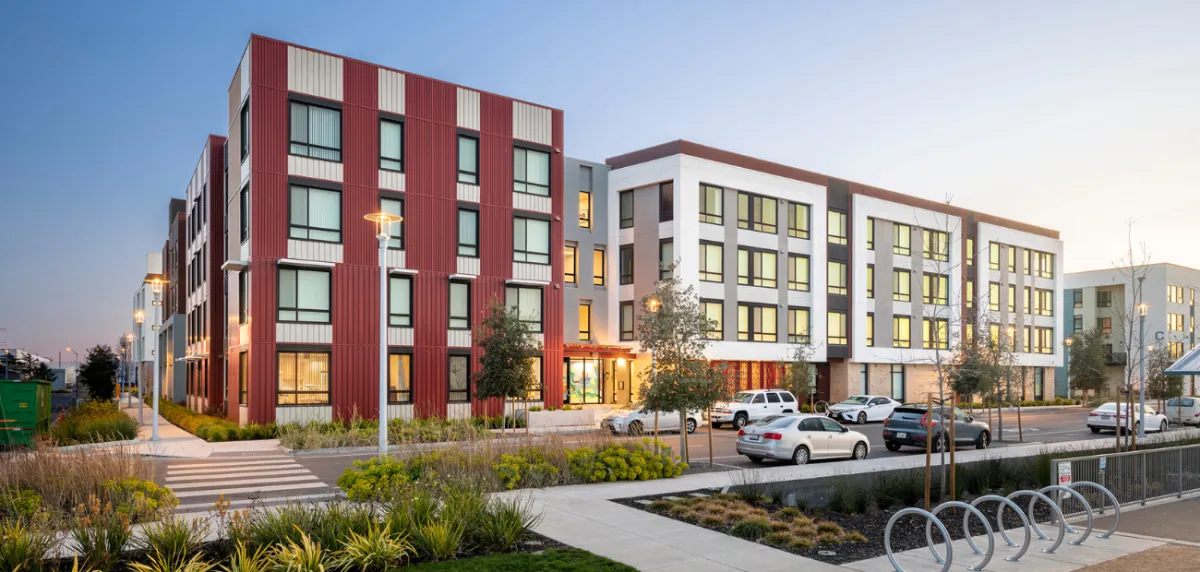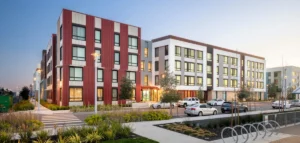Milwaukee and Northern New Jersey had the lowest multifamily turnover rates in 2018, according to CBRE. Pictured is RIVET, a 163-unit property in Jersey City.
Posted on by Kristin Hiller in Features, Multifamily
LOS ANGELES — Multifamily turnover, the percentage of total rented units not renewed each year, fell to 47.5 percent in 2018, its lowest level in at least two decades, according to CBRE.
Five of the six major multifamily REITs recorded lower turnover in the first quarter of 2019 than the prior year. For AvalonBay, Camden, Equity Residential, MAA and UDR, the average annualized first-quarter rate fell by 200 basis points to 42 percent. Essex was the exception with a 100-basis-point rise to 41 percent.
The REITs’ historical data also confirm that turnover has been falling for many years, argues CBRE. For example, Equity Residential’s first-quarter annualized rate of 39.2 percent was its lowest level since at least 2005.
Benefits of lower turnover rates generally outweigh disadvantages. Turnover hurts a property due to loss of rent while the unit is vacant, possible rent concessions needed to release the unit and expenses to make it ready for a new renter. Turnover costs are at least $1,000 per unit and can easily rise to more than $3,000, according to the National Apartment Association.
Yet, owners often achieve more rent growth when units turn. Higher turnover can be advantageous during periods where the market or product segment is achieving better-than-average rent growth.
More recently, rent gains have moderated, so high occupancy is driving lower turnover. The recent turnover decline, concurrent with the large amount of new multifamily supply each year, is a sign of market strength, says Jeanette Rice, Americas Head of Multifamily Research for CBRE.
Region, size matter
Data analytics firm RealPage reported that Northeast and Midwest markets dominated its list of metros with the lowest 2018 turnover. Metro areas in the South and West had the highest rates. Among 50 metros analyzed, Milwaukee and Northern New Jersey tied for the lowest 2018 turnover rate of 38.1 percent. Salt Lake City and San Antonio had the highest turnover rates at approximately 53.5 percent. Metros with more vibrant economies typically have higher-than-average turnover rates, says CBRE.
In addition, older properties and Class B and C assets typically have lower turnover rates than newer assets, at least at this point in the cycle. Vacancy rates are low in older assets with limited options for residents. Conversely, rental concessions in many Class A properties, especially those in lease-up, help to attract residents and thereby encourages turnover. In other words, renters are looking for the best deal.
Small multifamily assets typically have lower turnover rates, in part due to management’s philosophy of maintaining high occupancy over maximizing rent growth potential, says Rice. “Markets and assets governed by rent-control regulations also usually have much lower turnover due to the restricted rent increases for occupied units.”











